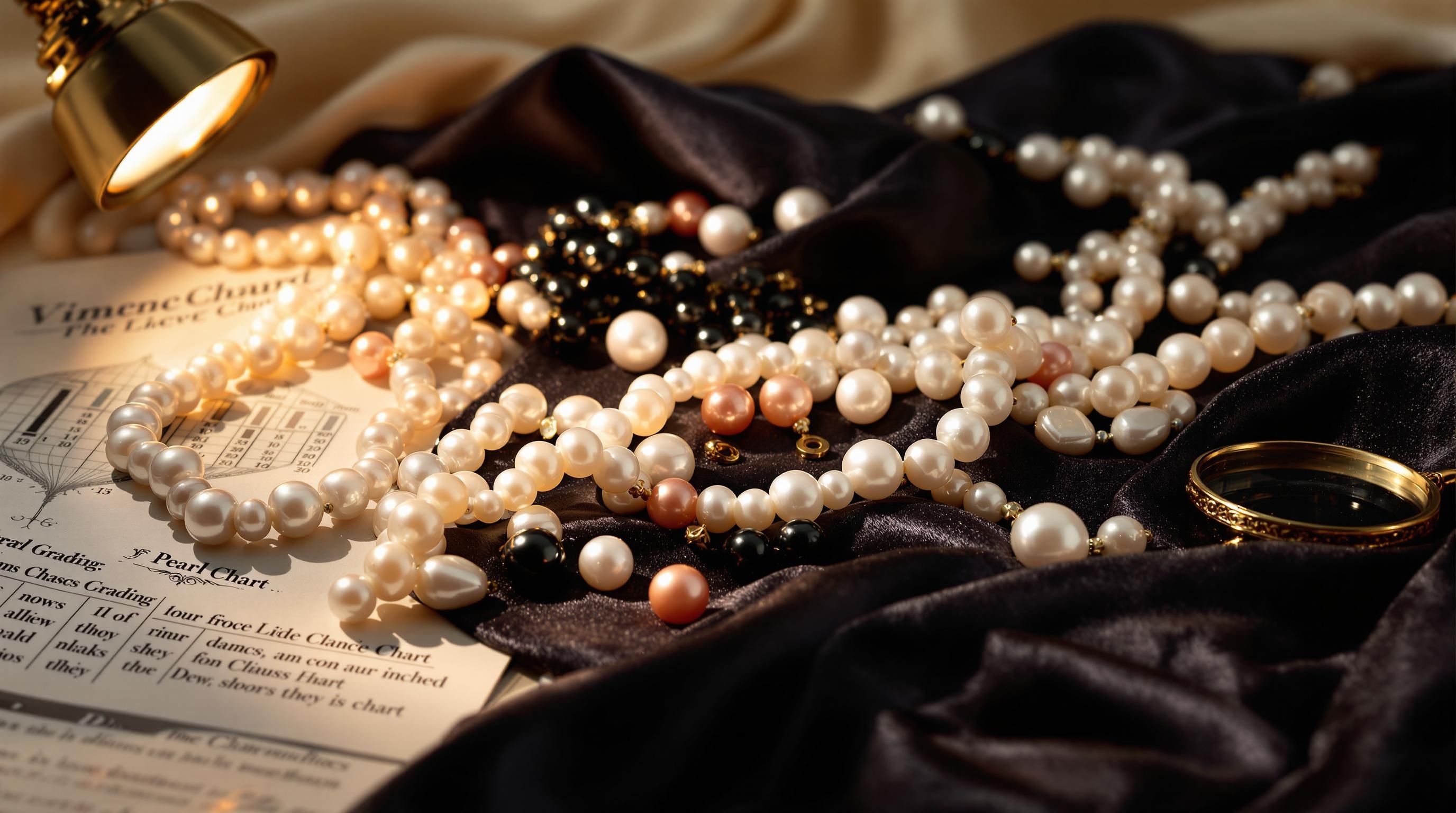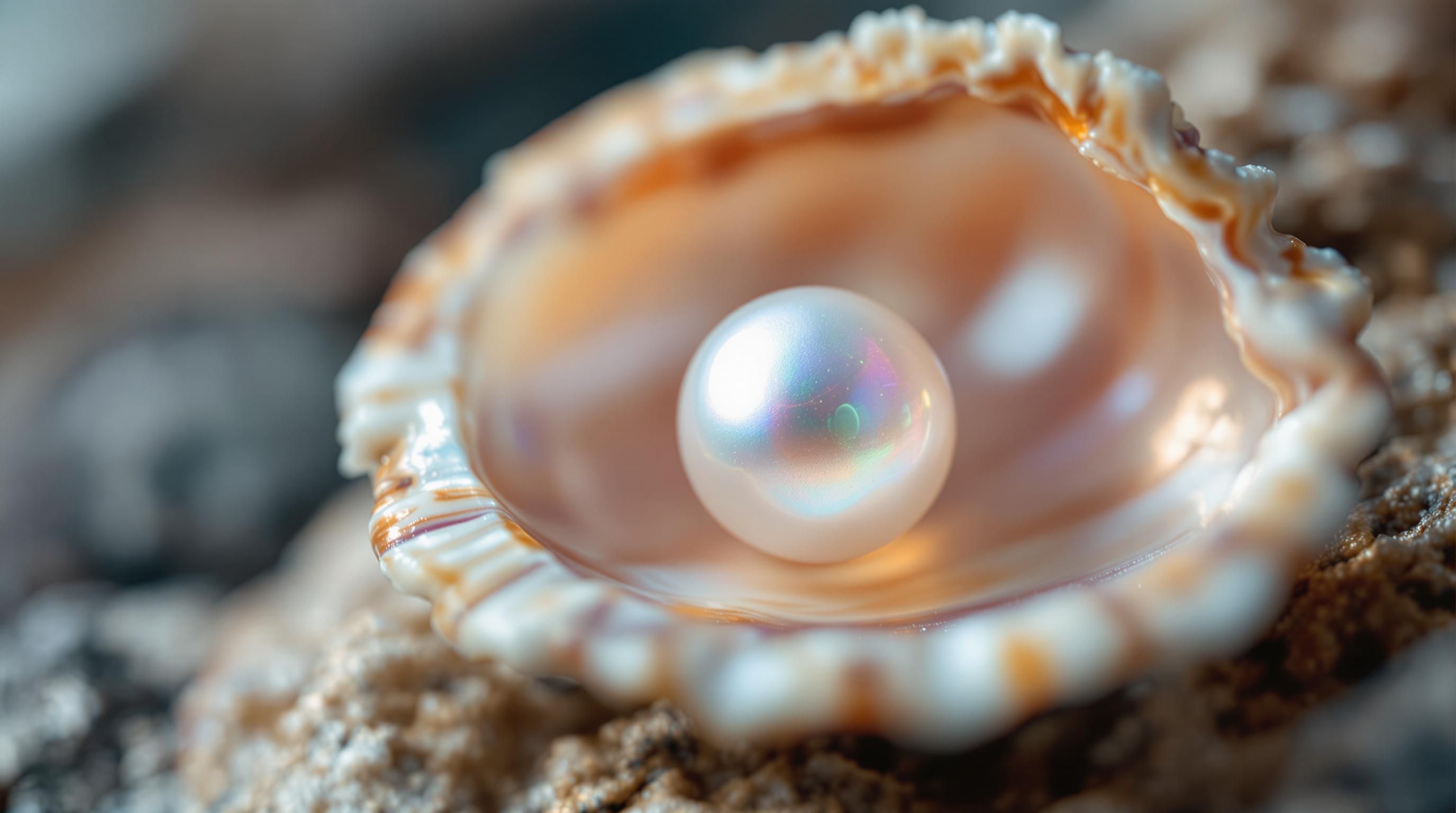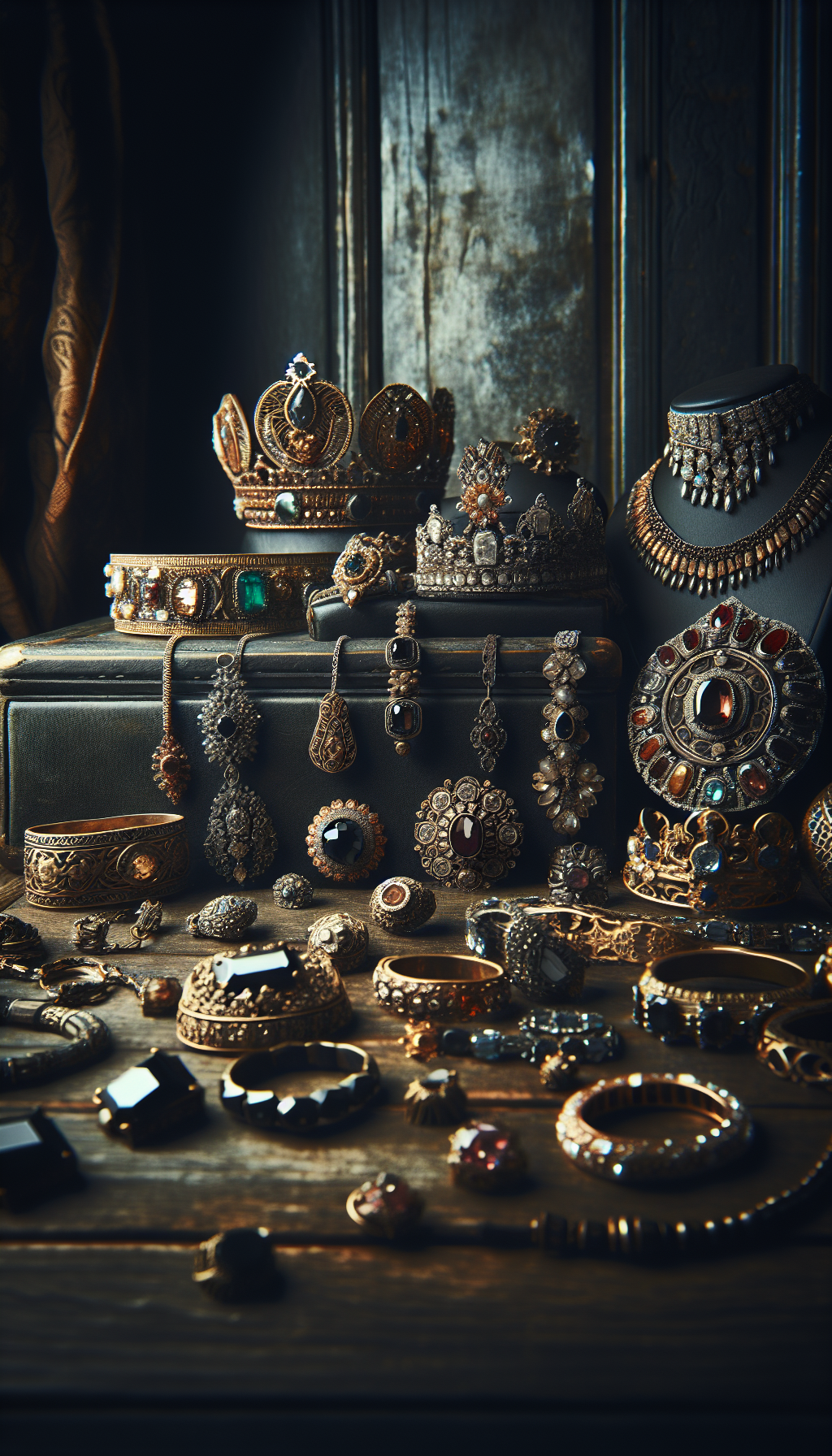Have you ever found a pearl in your clam dinner and wondered if you struck gold? It’s a thrilling moment that leaves many wondering about the potential value of their unexpected discovery. Unlike the cultured pearls commonly sold in jewelry stores, natural pearls from clams are rare treasures formed without human intervention.
In this comprehensive guide, we’ll explore the fascinating world of clam pearls, their value factors, and how to determine if your discovery is worth a fortune or merely a beautiful souvenir. From understanding what makes certain pearls more valuable to knowing where to sell them, we’ve got you covered.
Clam Pearl Value Overview
Natural pearls found in clams are extremely rare compared to cultured pearls. This rarity alone gives them a special status in the pearl market. While cultured pearls are deliberately created by inserting an irritant into an oyster or mussel, natural pearls form when an irritant accidentally enters the mollusk without human intervention.
Clam Pearl Value Facts
The value of a clam pearl depends significantly on several key factors:
- Type of clam: The species matters tremendously (quahog pearls are among the most valuable)
- Size: Larger pearls are rarer and typically more valuable
- Color: Certain colors command premium prices
- Shape: Round pearls are the most prized
- Surface quality: Smooth, unblemished surfaces increase value
- Luster: The pearl’s shine and reflectivity
- Rarity: How uncommon the specific type of pearl is
On average, a natural clam pearl’s value ranges from $300 to $1,500, but exceptional specimens can sell for much more. A perfectly round, large quahog pearl with excellent luster could potentially fetch several thousand dollars.
Clam Pearl Price Ranges
Current market values based on pearl type and quality (2023)
</tbody>
</table>
Types of Clam Pearls and Their Value
Quahog Pearls: The Rare Purple Gems
Quahog pearls are among the most valuable clam pearls in the world. These gems are produced by the hard-shelled clam (Mercenaria mercenaria) found primarily along the Atlantic coast of North America. What makes these pearls extraordinarily valuable is their distinctive purple to lavender coloration, often described as having a “flame” pattern.
According to pearl experts, genuine quahog pearls are incredibly rare—you might need to open tens of thousands of clams to find just one pearl. Due to their rarity, quahog pearls can sell for $1,000 to over $10,000 depending on size, color intensity, and quality.
Giant Clam Pearls
Pearls from giant clams (Tridacna gigas) can reach impressive sizes. These pearls are often non-nacreous (lacking the iridescent quality of nacreous pearls) and typically have a porcelain-like appearance. While not as commercially valuable as some other varieties, exceptional specimens, particularly those with unique coloration or patterns, can still command significant prices.
Common Clam Pearls
Many edible clam varieties occasionally produce pearls during their lifetime. These pearls are typically small (under 5mm), irregularly shaped, and white to off-white in color. While these common clam pearls don’t typically carry high commercial value (often $10-$100), they still possess the charm and rarity of being natural gems.
History of Notable Clam Pearl Discoveries
- 2022
New Jersey Restaurant Discovery
A New Jersey couple found a purple pearl in their restaurant clam, potentially worth thousands. Experts estimated its value between $50 and $100,000. - 2018
Record Quahog Pearl Sale
A perfectly round 9mm quahog pearl with exceptional purple coloration sold at auction for over $15,000. - 2006
Giant Clam Pearl Discovery
A fisherman discovered an enormous 34kg natural pearl from a giant clam in the Philippines, valued at approximately $100 million. - 1995
Maine Quahog Discovery
A recreational clammer in Maine discovered a 3-carat purple quahog pearl valued at $2,500.
Factors That Affect Clam Pearl Value
Size Matters
When it comes to pearls, size significantly impacts value. Natural pearls found in clams are typically small, with most measuring under 5mm in diameter. Pearls smaller than 5mm generally have limited market value, while those exceeding 8mm can be quite valuable due to their rarity. Each millimeter increase in diameter can substantially affect the pearl’s price.
Color and Luster
The color of a clam pearl plays a crucial role in determining its value:
- Purple/lavender: Highest value (especially from quahog clams)
- Pink: Very valuable, particularly with strong color
- White with iridescence: Good value when iridescence is strong
- Cream/off-white: Common, lower value unless exceptionally large or perfect
Luster refers to the pearl’s reflective quality—how light plays across its surface. Pearls with high luster have a bright, mirror-like reflection and command higher prices than dull pearls.
Shape and Surface Quality
The shape of a pearl significantly affects its value:
- Round: Most valuable and rare in natural pearls
- Near-round: Still highly desirable
- Oval: Good value if symmetrical
- Baroque (irregular): Lower value unless exhibiting unique beauty
Surface quality refers to how clean and unblemished the pearl appears. Pearls with smooth surfaces free from pits, bumps, and discolorations command higher prices than those with imperfections.

Clam Pearl Quality Assessment Checklist
Use this checklist to evaluate your clam pearl's potential value
- Pearl is larger than 5mm in diameter
- Pearl has a round or near-round shape
- Surface is smooth with minimal blemishes
- Pearl has strong luster (reflective quality)
- Color is even and attractive (purple/pink is premium)
- Pearl came from a quahog clam specifically
- Pearl has an iridescent or flame-like pattern
- You have documentation of its natural origin
How to Identify a Valuable Clam Pearl
Visual Examination
Start with a careful visual examination:
- Check the size using a millimeter gauge or ruler
- Examine the shape – is it round, oval, or irregular?
- Look at the surface for smoothness and blemishes
- Assess the color – remember that purple/pink pearls from quahog clams are most valuable
- Examine luster – hold it under good lighting to see how light reflects off the surface
A jeweler’s loupe (10x magnification) can help you see details not visible to the naked eye.
The “Tooth Test”
A simple preliminary test involves rubbing the pearl gently across your front teeth. Natural pearls feel slightly gritty or textured, while fake pearls (plastic or glass) feel smooth. However, this test should never be your only method of authentication.
Professional Authentication
If your pearl passes initial inspection and appears potentially valuable:
- Consult a gemologist specializing in pearls
- Seek certification from a reputable gemological laboratory
- Consider x-ray testing – the gold standard for natural pearl verification
Professional authentication costs money but is essential before attempting to sell any potentially valuable pearl. The Gemological Institute of America (GIA) and other reputable labs can provide proper certification.

Where to Sell Valuable Clam Pearls
Specialty Pearl Dealers
Pearl specialists and dealers with expertise in natural pearls often offer the best prices, particularly for rare specimens like quahog pearls. These dealers understand the unique value of natural clam pearls and have connections with collectors and high-end buyers.
Pros:
- Expertise in valuation
- Access to serious collectors
- Better understanding of fair market value
Cons:
- May take commission
- Limited number of reputable dealers
Auction Houses
For exceptionally valuable pearls (generally worth $1,000+), prestigious auction houses like Christie’s or Sotheby’s might be an option. Online auction platforms specializing in gemstones and pearls are also worth considering.
Pros:
- Competitive bidding can drive prices up
- Prestigious platform adds credibility
- Wide audience of serious collectors
Cons:
- High commissions (often 15-25%)
- May require minimum value thresholds
- Process can take months
Online Marketplaces
For mid-range value pearls, specialized online marketplaces focusing on gems and jewelry might be appropriate:
- Specialized gem marketplaces: Sites like Gem Rock Auctions
- High-end crafting platforms: Etsy shops specializing in natural pearls
- Collector forums: Pearl-guide.com and similar collector communities
Pros:
- Lower fees than auction houses
- Direct access to buyers
- Simpler process
Cons:
- Risk of undervaluing your pearl
- More responsibility for marketing and authentication
- Potential security concerns
Remember that proper documentation, including professional certification of authenticity, significantly increases buyer confidence and the price you can command.
Common Questions About Clam Pearl Value
How much are pearls from a clam worth?
The value of pearls from clams varies significantly based on multiple factors. On average, natural clam pearls range in value from $300 to $1,500 per pearl. However, small, irregularly shaped clam pearls might be worth only $10-$100, while exceptional specimens—particularly quahog pearls with purple coloration—can be worth $2,000 or more.
Factors that influence value include:
- The specific clam species (quahog pearls are most valuable)
- Size (larger pearls command higher prices)
- Shape (round is most valuable)
- Color (purple/pink generally most valuable)
Surface quality and luster
How rare is it to find a pearl in a clam?
Finding a natural pearl in an edible clam is extremely rare. The odds vary by clam species, but generally:
- For common edible clams: approximately 1 in 5,000 to 1 in 10,000
- For quahog clams: even rarer, estimated at 1 in 20,000 or more
This rarity contributes significantly to the value of natural clam pearls, especially when they have desirable characteristics like good size, shape, and color.
What is the most valuable type of clam pearl?
Quahog pearls are generally the most valuable type of clam pearl. These pearls come from the hard-shelled quahog clam (Mercenaria mercenaria) found along the Atlantic coast of North America.Quahog pearls are highly prized for their:
- Distinctive purple to lavender coloration
- Unique "flame" pattern
- Extreme rarity
A high-quality quahog pearl can sell for $1,000 to $10,000 or more, depending on size, color intensity, and overall quality. The most valuable are large (over 8mm), round, and have deep purple coloration with excellent luster.
How can I tell if my clam pearl is valuable?
To determine if your clam pearl has significant value:
- Identify the clam species it came from (if possible)
- Measure its size (pearls over 5mm have more potential value)
- Assess its shape (rounder shapes are more valuable)
- Examine its color (purple/pink pearls from quahog clams are most valuable)
- Check surface quality (smooth, unblemished surfaces increase value)
- Evaluate luster (bright, reflective surfaces command higher prices)
For a definitive valuation, consult a professional gemologist or pearl specialist. The Gemological Institute of America (GIA) and other reputable laboratories can provide certification that will help establish your pearl’s value.
What's the difference between clam pearls and oyster pearls?
The main differences between clam and oyster pearls include:
Formation:
- Both form when an irritant enters the mollusk and is coated with nacre
- Clam pearls are almost always natural (not cultured)
- Most commercial oyster pearls today are cultured (human-induced)
Appearance:
- Clam pearls often have porcelain-like luster rather than the iridescent nacre of oyster pearls
- Clam pearls (especially quahog) can have distinctive purple/pink colors rarely seen in oyster pearls
- Many clam pearls (except quahog) are non-nacreous and lack the iridescent quality of oyster pearls
Value:
- Natural oyster pearls can be extremely valuable, often more so than most clam pearls
- However, premium quahog pearls can command higher prices than many cultured oyster pearls
The rarity of the specific type largely determines the comparative value
How much is a pink pearl worth from a clam?
Pink pearls from clams, particularly quahog clams, are among the most valuable natural pearls. Their value ranges significantly based on quality factors:
- Small (under 5mm), irregular pink pearls: $100-$500
- Medium (5-8mm) pink pearls with good luster: $500-$1,500
- Large (over 8mm), high-quality pink pearls: $1,500-$5,000+
The most valuable pink clam pearls have intense, even coloration, excellent luster, round or near-round shape, and minimal surface blemishes. Pink quahog pearls with the distinctive "flame" pattern are particularly prized by collectors.
Do I need to get my clam pearl certified?
Getting your clam pearl certified is highly recommended if:
- The pearl appears valuable (good size, color, shape, etc.)
- You intend to sell it for a significant amount
- You want to insure it
- You’re uncertain about its authenticity
Professional certification from a reputable gemological laboratory like the GIA provides:
- Verification that the pearl is natural (not cultured or fake)
- Documentation of its key characteristics
- An objective assessment of quality
- Significantly increased buyer confidence and potential selling price
The cost of certification typically ranges from $100-$300, depending on the laboratory and level of documentation requested.
Where can I sell my valuable clam pearl?
Options for selling valuable clam pearls include:Specialty Pearl Dealers:
- Often offer best prices for rare specimens
- Understand the unique market for natural clam pearls
- Have connections with serious collectors
Auction Houses:
- For very valuable pearls (generally $1,000+)
- Christie’s, Sotheby’s, or specialized online auction platforms
- Can reach international collectors
Online Marketplaces:
- Specialty gem and jewelry platforms
- Collector forums and communities
- High-end crafting platforms with gem specialists
For best results, always have professional documentation and certification before attempting to sell a valuable pearl.
External Resources for Pearl Valuation and Identification
Pearl-Guide Forum: Is the Pearl I Found Valuable?
Expert discussion forum where pearl specialists help identify and evaluate found pearls, with specific information about clam pearls.
The Pearl Source: How Much are Pearls Worth?
Comprehensive guide on pearl valuation factors, including specific information about natural pearls from various mollusks.
Kari Pearls: Natural Clam Pearls Collection
Specialty pearl dealer showcasing natural clam pearls for sale with detailed descriptions and pricing information.
GIA Pearl Description System
The Gemological Institute of America's official system for describing and grading pearls, used by professional gemologists worldwide.
Pearl Paradise: Natural Clam Pearl Examples
High-quality examples of authenticated natural clam pearls with detailed descriptions and pricing.
Reddit Gemology: Real People Finding Clam Pearls
Community discussions about real-world clam pearl finds with expert commentary on potential value.
Conclusion: Is Your Clam Pearl Worth a Fortune?
Finding a pearl in your clam dinner is certainly exciting, but determining its true value requires careful consideration of multiple factors. While most natural clam pearls have modest value in the $10-$500 range, exceptional specimens—particularly quahog pearls with purple coloration—can be worth thousands.
The key takeaways for anyone who has found a clam pearl:
- Know what you have: Identify the type of clam and assess the pearl’s key characteristics
- Seek professional authentication: For potentially valuable pearls, professional certification is essential
- Be realistic about value: Most found pearls have moderate rather than extraordinary value
- Preserve it properly: Store your pearl in a soft cloth away from chemicals and extreme temperatures
- Consider the sentimental value: Even if not commercially valuable, your pearl has a unique story
Whether your clam pearl turns out to be a valuable treasure or simply a beautiful natural souvenir, the thrill of finding one of nature’s rare gems makes for a memorable experience. With the knowledge gained from this guide, you’re now equipped to appreciate—and potentially profit from—your unexpected discovery.
Get a Professional Appraisal
Unsure about your item’s value? Our certified experts provide fast, written appraisals you can trust.
- Expert report with photos and comps
- Fast turnaround
- Fixed, upfront pricing
No obligation. Secure upload.
| Category | Price | Notes |
|---|---|---|
| Small natural clam pearl (under 5mm) | $10-$100 | Common colors, irregular shape |
| Medium natural clam pearl (5-8mm) | $100-$500 | Good luster, minor blemishes |
| Large natural clam pearl (over 8mm) | $500-$1,500 | Excellent luster, appealing color |
| Premium quahog pearl | $1,000-$2,000+ | Rare purple/pink color, excellent quality |
| Exceptional specimen | $2,000-$10,000+ | Perfect round shape, rare size/color combination |




